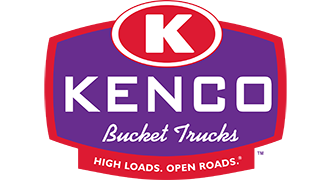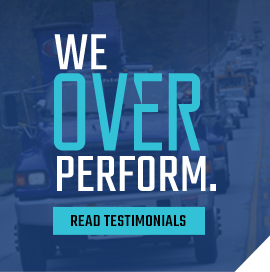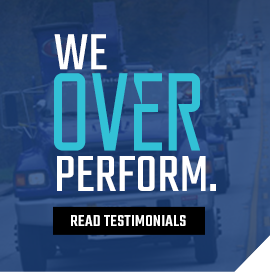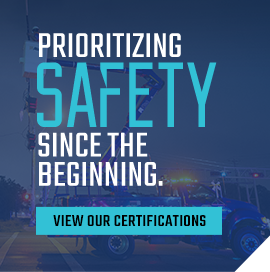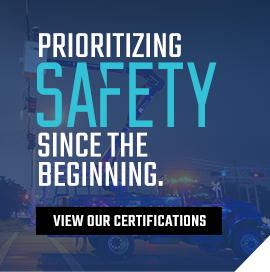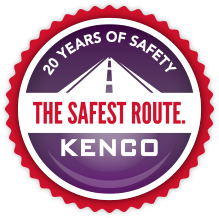Your Guide to Oversize Transport Success.
Based on our experience working with industry experts, Kenco Bucket Trucks compiled the following guide of best practices to be used as a tool to assist and continually educate transport teams. These suggestions are offered to help make any oversize transport a success. Since there are countless situations that can arise on a transport, these guidelines are an effort to streamline common variables while being open to new and unique circumstances during transit. Knowing your role and these recommendations will help every transport be safe and successful. Think of Kenco’s experts when you have HIGH LOADS and you need OPEN ROADS.
We’re in this Together.
Own the Road.
Ultimately, the truck driver is responsible for the transport. This includes the route and any damage which is caused by his or her load or equipment. The team is assembled to prevent any and all incidents — which is a great responsibility.
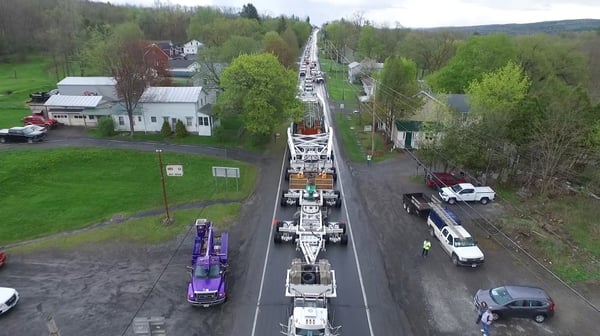
Meet Up Before Heading Out.
A pre-trip meeting should always occur every day prior to departure.
Be aware of the route and any hard turns or maneuvers that must be made. Ensure roles are assigned and communicated to the transport team:
- Pole
- Chase
- Driver
- Utility Crews
- Uniformed Escorts
Communicate.
Be sure to check your CB before the trip begins. All members of the transport team must have a working CB. Tip: turn down the echo-power microphone device so conversations are understandable.
Take Responsibility.
It’s your responsibility to see a maneuver through. If you call a maneuver to the operator of the transport, you must take ownership of it.
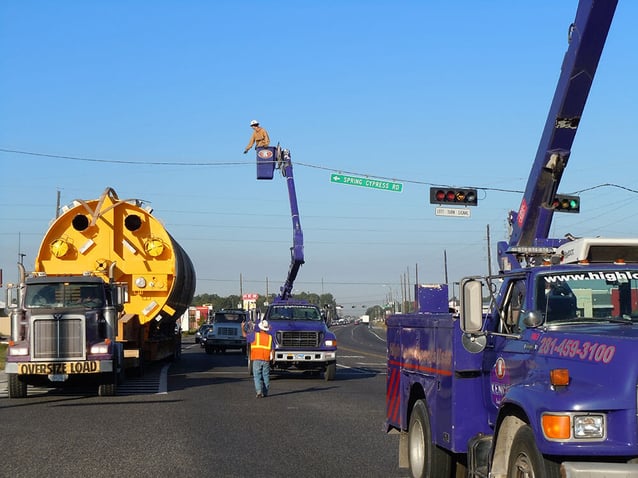
Road Rules.
Height Poles
All height poles should be of a non-conductive material, such as fiberglass, with no exposed hose clamps, c-clamps, tape balls or excessive devices above the 16-foot mark on the pole that could cause potential snagging of aerial lines or wiring. Any clamping device shall be taped while avoiding the creation of a ‘tape ball’, which could potentially snag lines or wiring. These should be inspected or available for inspection by the driver and load superintendent each day before the moves begin. Kenco will verify height settings for the pole car as it is part of our SOP:
- Height pole should be set six inches above highest travel height of the load.
- Height should be marked at six-inch intervals to help determine height of conflict.
- Height pole measurement should be verified throughout project.
When working with utility crews, the height pole’s role is not to say how low they hit the aerial and move on. The height pole shall wait at each aerial conflict encountered until bucket truck has:
- Lifted, dropped or removed the line or traffic signal and manipulated the hard arm or overhead signage
- Instructed the pole car to reposition to another spot on the line to conduct a lift or check for clearance.
- Made the determination to slide and release the pole car to next aerial conflict.
- Established an alternative plan.
If a pole car is to be assigned to a night transport, it must be equipped with ample lighting to illuminate all aerial wires, making them visible to all transport parties.
Kenco Bucket Truck Rules and Regulations:
- Kenco Bucket Truck booms are not designed for swinging hard arms or conducting heavy lifts.
- Kenco Bucket Trucks cannot cut tree limbs or branches without a letter of approval from the owner or maintenance authority with jurisdiction over the tree.
- Kenco Bucket Trucks may not manipulate any railroad e
- Kenco Bucket Truck technicians cannot take direction from others with regards to lifting of lines, loosening bolts, manipulating signals, stripping loads, position in convoy, etc.
All states require different lifting protocols to handle their equipment and infrastructure and we must follow their procedures. These activities may hinder or slow progress, but it is their equipment we are handling and therefore we must adhere to their specifications. Drivers should not push or rush escort or utility activities.
Per state law, only the owner of the high voltage utility or their contractor shall handle high voltage conflicts. This includes all service drops, triplex and open-air secondary wiring.
No lifting of wiring shall occur with anything other than OSHA approved lifting apparatus such as hot sticks or telescoping insulated poles (no paint poles, PVC pipe, boards, etc.).
Utility crews or bucket trucks are not considered escort vehicles and cannot be used for traffic control per state ordinances.
Rear Escort
A rear escort is required to remain with the last bucket truck. The goals of the rear escort are important and include:
Providing additional visibility to the motoring public.
- Ensuring no vehicles get between the load and the last bucket trucks or vehicles in the convoy.
- Keeping the intersection secure while the utility crew completes their work.
The convoy should slow or stop to allow the utility crew to get back to the front and chase vehicle to return to assigned position. Bucket trucks are not effective in high load transports behind the load. The transport driver sets the pace and is responsible for getting the bucket trucks back to the front safely. Uniformed and civilian escorts will assist, but coordination must be announced for returning to the front.
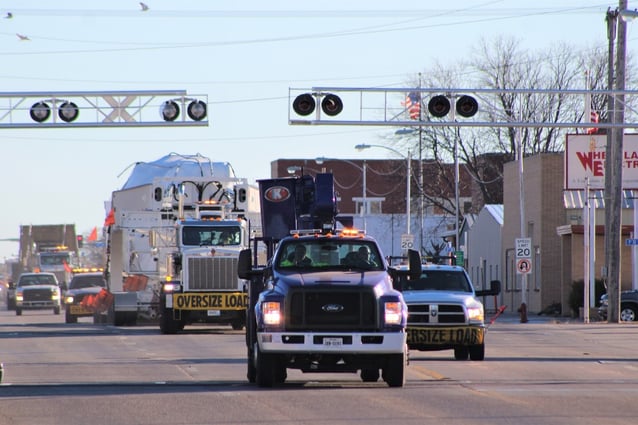
Safety First.
An “All stop” may be called by any member of the team on the project. This is for any situation deemed unsafe or is creating or has created an unsafe work environment. This needs to be called out over the project designated CB channel so all members can hear and be made aware. After the all stop has been called, all members of the project need to be made aware of the situation and establish an action plan before moving forward. The transport supervisor will decide if movement is to continue. In the event there is no supervisor assigned to transport, the transport driver will make the call to commence.
Disclaimer: The suggestions provided in this guide are recommendations for you to consider; however, we understand that you will make decisions based on every situation you encounter.
